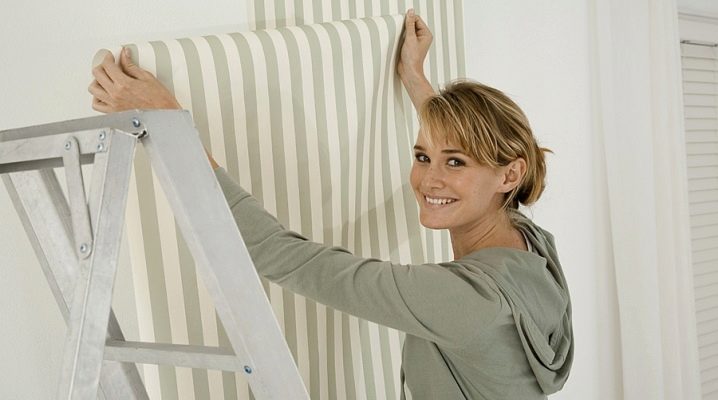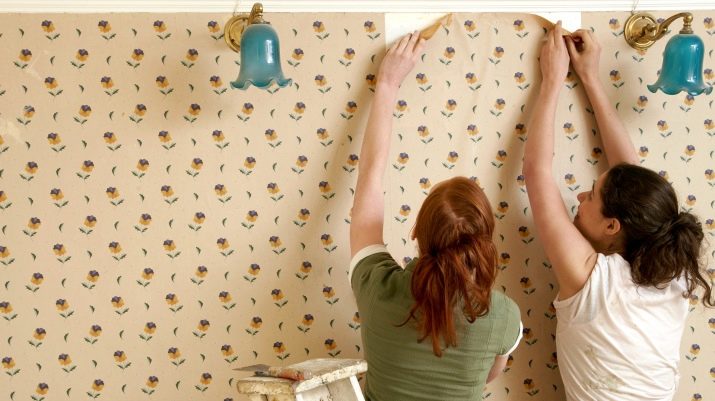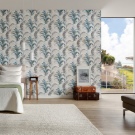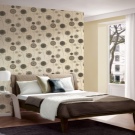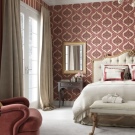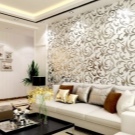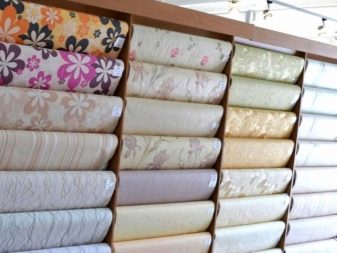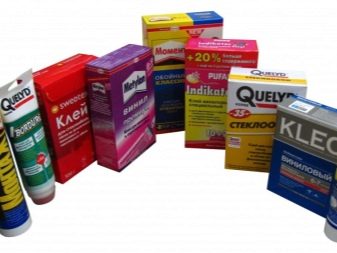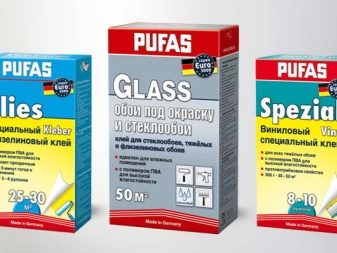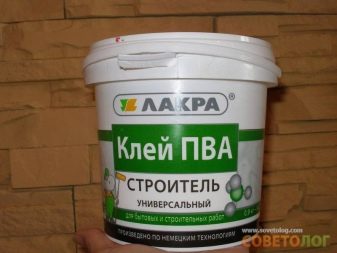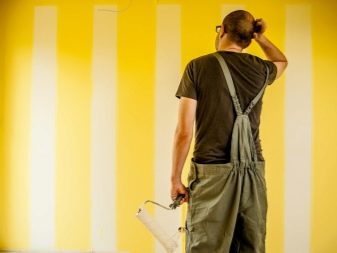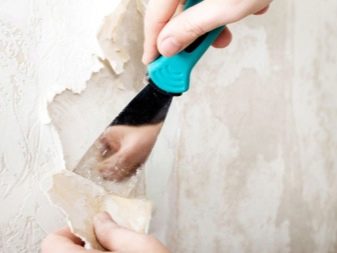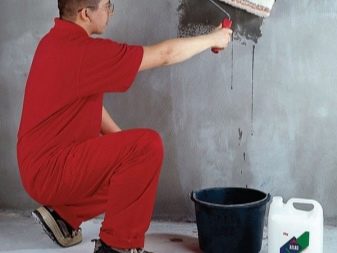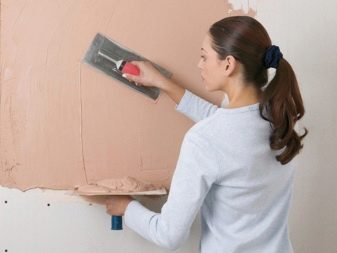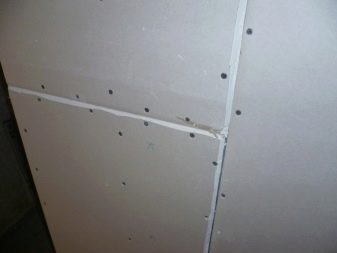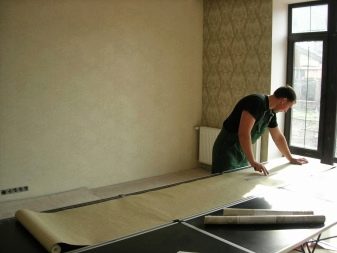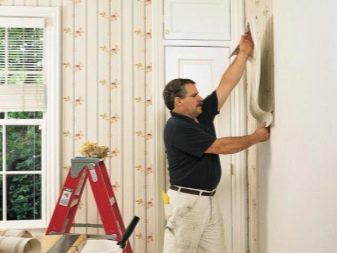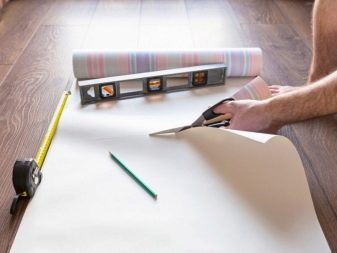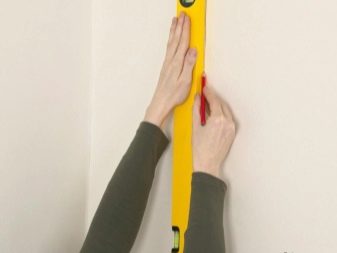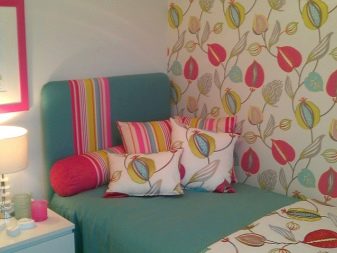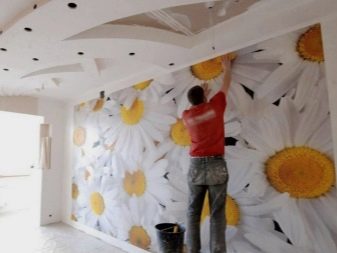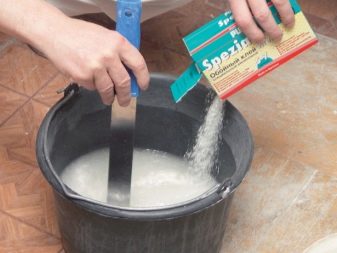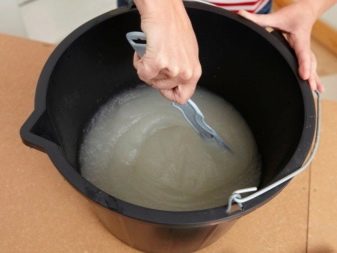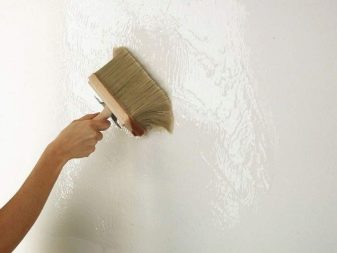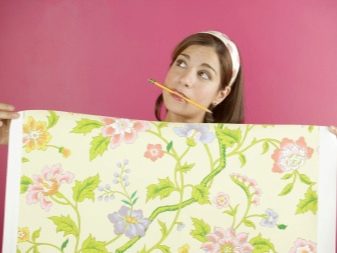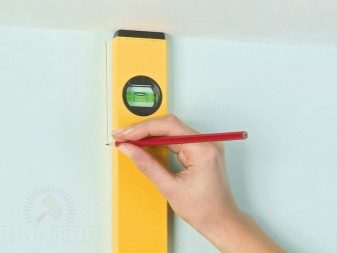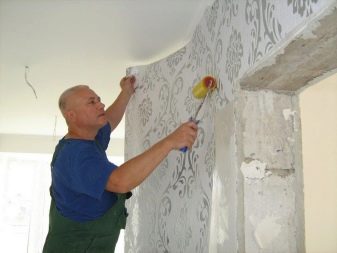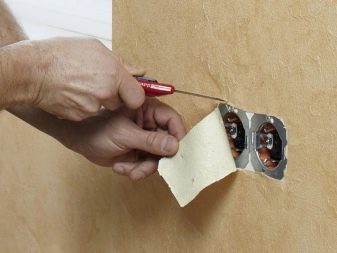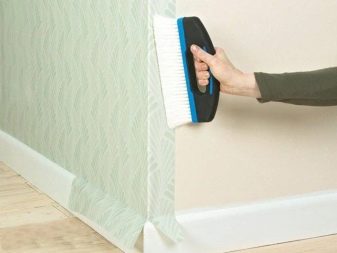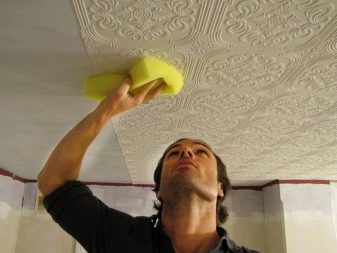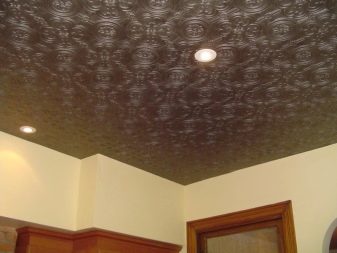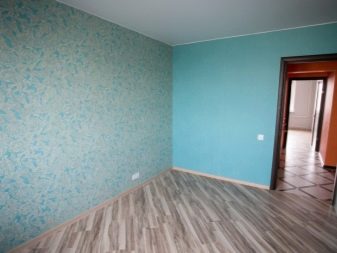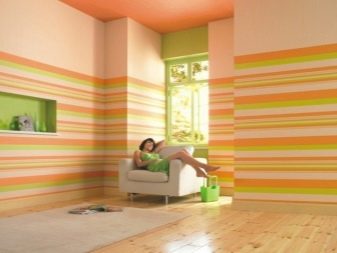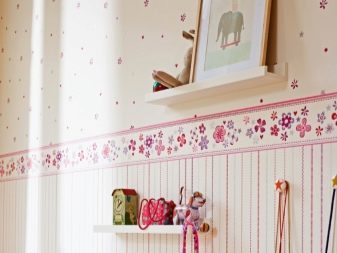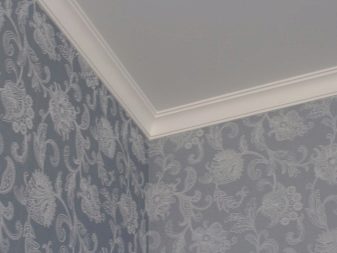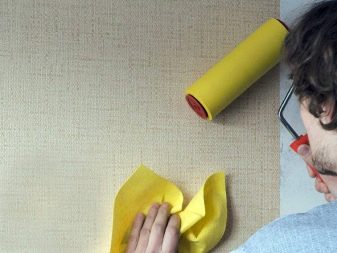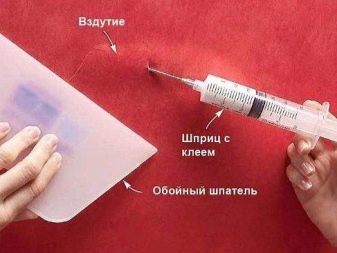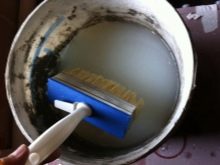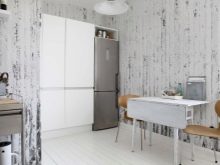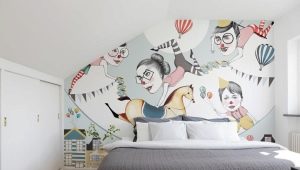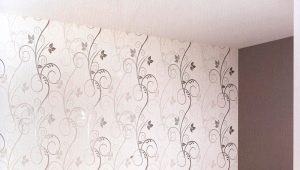Rules for gluing vinyl wallpaper on non-woven base
Now the construction market offers a huge amount of materials for repair. The technology of making wallpaper is progressing every year. Vinyl and non-woven durable and beautiful coatings have replaced paper canvases. The modern buyer often prefers vinyl non-woven wallpaper, because of their many advantages. Consider the features of repair with their use.
How to stick?
When you purchase canvases, then one of the first questions that arises is what kind of glue to choose for working with them. The great advantage now is that in any store you can find specialized compositions for various types of canvases: non-woven, vinyl, paper, glass wallpaper and even universal. The seller will help you navigate in the selection.
But there are cases when the required glue is not available or the price is not permissible for your budget, then you need to choose a worthy replacement for it.
Vinyl wallpaper on non-woven base is quite heavy, so the glue in any case should be of high quality and specialized.
The main component of adhesive compositions is now modified starch. In addition to it, add various additives that affect the properties of the adhesive. These can be antifungal additives that protect walls from mold and biological contamination. Methylcellulose is also added to formulations for heavy coatings to improve gliding properties.
Vinyl wallpaper on cellulose basis can be glued with both vinyl and non-woven glue. In the first case, the composition is intended for different types of PVC coatings. The only downside of it is that the composition makes the walls impermeable to air, and this reduces the environmental friendliness of the room.
And you need to remember that when working with non-woven wallpaper based glue is always applied to the wall.
It is also advisable to choose non-woven glue. It is ideal for such coatings, will allow the walls to breathe and help to grapple with any kind of bases. In this case, you can not be afraid of the appearance of stains on the canvases. Flizelin tends to shine through the color, but the glue is specially designed so as not to give color.
For rooms with high humidity, you can opt for PVA glue. He will be able to keep the dense and heavy wallpaper on the walls. But a significant disadvantage of this product is the difficulty of dismantling the wallpaper. When you do the next repair, it will be almost impossible and very laborious to remove the canvases from the walls without disturbing the layer of rough finish.
Wall preparation
The first stage of wallpapering in the apartment is the preparation of the walls. First you need to remove all remnants of previous coatings. That which did not come off, should be scraped off with a spatula. Then you need to put up all the damaged places and cover with a layer of primer for better adhesion of the wallpaper to the wall.
If you are doing repairs in a new building, then Glue wallpaper on a concrete slab or brick wall, of course, impossible. First, a draft layer of putty is applied to eliminate large irregularities, then it is primed, then the finishing layer is laid. It gives a special smoothness and light color to the walls. It is also necessary to apply a primer.This will also save glue, as it will not be strongly absorbed into the base of the wall.
Please note: if you have leveled the walls with the help of drywall or dark stains from previous treatments have remained on them, they should always be covered with fine putty before gluing. This will save you from the manifestation of stains on the canvas with non-woven base.
If your choice fell on dark wallpaper with a large relief, then the uneven walls do not have to be further processed. Cloths hide minor defects. But in the case when the wallpaper is light and has an elegant fine texture and play, it is better to work out all the irregularities additionally, otherwise they will clearly appear after repair.
Marking of cloths
This is no less important stage in the decoration of the room. How you do it depends on the speed and efficiency of your work.
First, check all batch numbers of rolls with wallpaper. They must be the same, the color and pattern must match. Vinyl wallpaper on non-woven base is heavier and more dense than other types of wallpaper. It should be glued end-to-end, given this when cutting the canvases. Another difference, for example,from coatings on a paper basis is that non-woven fabric does not stretch after pasting. After drying, the joints will remain even without gaps and cracks.
From cutting tools, you will need scissors, a sharp stationery knife, a construction pencil, a square, and a long ruler. Rolls can be rolled right on the floor, making sure it is clean.
It is recommended, after measuring the required height of the walls, to reveal the greatest height (unevenness may be present) and to measure the webs on it, adding 10 cm to the allowance.
Another significant point is the presence of the figure. If you have chosen the usual wallpaper for plaster, then everything is simple - feel free to cut the rolls into strips of the same length in a row. But in the case when the choice fell on the hot stamping wallpaper with silk-screen printing or foamed relief paintings with a large pattern, you need to fit the pattern.
It is good if the pattern is repeated and the size of the offset is indicated on the rolls. In case the embossed wallpapers have a large diverse pattern (for example, flowers of different sizes), then it is better to customize each canvas after pasting the previous one directly in place for greater accuracy.
Wall mural is more difficult to stick because the canvas is solid and can be quite large in size, but you get a single picture with very realistic images.
Glue preparation
As a rule, modern wallpaper glue is sold in boxes or sealed packages of 200-500 grams. Inside - a powder mixture that is resistant to temperature changes during long-term storage. Shelf life reaches 4 years in an intact package and 10 days in a divorced condition.
To prepare the glue, you need a construction bucket, paddle or mixer. Pour the powder into the bucket and add the right amount of non-cold water. Proportions manufacturer always points on the package. Basically, the composition is stirred for several minutes, then allowed to stand for 5-10 minutes and again stirred.
The main thing is that the mixture was moderately thick and homogeneous in consistency. In budget brands of glue buyers often note a large number of lumps.
How to glue?
Doing your own hands to glue vinyl wallpaper on non-woven base is not so difficult, but it is better to take an assistant. Cloths are massive, often wide - meter, and keeping them alone is not very convenient.
It is important to make sure that the preparation is thorough. Many are concerned about the question of whether it is possible to stick vinyl wallpaper on lime. If its layer is sufficiently thin and of high quality, it never cracks or crumbles anywhere, then you can try. Take advantage of primer deep penetration. Glue will keep the canvas on this basis. But if the damage is still there and the whitewash layer is large enough, it is better to wash it off and putty the walls over again.
Wallpaper with a pattern must be pre-fitted. Although in order not to engage in the selection of patterns separately, it is possible to roll them out of the roll right when pasting. The main thing is to consider the additional required length when purchasing.
There is a general step-by-step instruction for wallpapering:
- We mark the vertical line from where we will begin work. Usually glued from the window. Line draw with level and ruler.
- For convenience, you can make tags on the width of the canvas. This will facilitate the application of glue.
- It is necessary to smear the composition of the wall, not the canvas, for a width slightly larger than the size of the roll.
- A selected piece is applied to the vertical and using a clean rag or a special roller from the middle to the edges, smooth the sheet from bubbles and defects.
- The remains of the bottom and top immediately need to remove the knife.
- The next canvas tightly attached to the previous one. Even if you did it not very carefully, there is time and opportunity to move it due to the composition of the adhesive.
- The joints are worked out for better grip and stealth seams with a rubber trowel.
- Excess glue should be cleaned immediately with a clean, dry cloth. Otherwise, then he can tread and spoil the appearance of the coating.
- Gluing vinyl wallpaper on non-woven fabric in the corners is quite difficult. Because of the thickness of the cloths butt-to-edge, no sheets can be glued. It is usually recommended to glue one lane by entering on another wall 5-7 cm. On the second wall, make a vertical marking with a level. And already from it the second web is overlapped. Then a vertical line is marked and cut through with a sharp knife. Leftover material removed. The seams need to be carefully glued, press and remove the remnants of the composition.
- Sockets and switches are usually dismantled before pasting, pre-de-energizing the room. Then, cross lines are cut in the canvases, bending the material inwards. And after drying, everything returns to its place.
- Vinyl wallpaper behind the batteries is usually brought up to a depth of 20 cm. They should be pressed with a rubber spatula or a small roller.
The rules for wrapping vinyl coverings for the ceiling are the same as for walls. Start to glue also from the window, marking out a line parallel to the wall. It is more convenient to roll out rolls right during the process to save time and not use the help of a second person.
Designers now offer a non-standard approach to wallpapering the walls. Instead of a vertical arrangement of cloths, you can use horizontal This will give a new design effect, for example, if the wallpaper is striped or with a pronounced one-sided arrangement of the pattern.
Another important point is how long the wallpaper dries after sticking. The minimum time indicated day after pasting. Ideally, for any work you must wait at least 48 hours. After that you can mount the skirting board and return sockets and switches. But the work on the installation of air conditioners, stretch ceilings and, in principle, living in a room is possible a week after working with non-woven wallpaper.Because changes in humidity and temperature can lengthen the drying process and the coating will fall off the walls.
Decoration and decor
To trim the room with vinyl wallpaper is not problematic. Ceiling and floor baseboards do not overlap with a large layer of wallpaper, as is the case with paper canvases. Due to the fact that the non-woven fabric is not stretched, the stock under the plinth is kept minimal.
In some styles of interior design it is appropriate to use borders. This forgotten decoration of the times of our grandmothers acquires a new round of popularity in the modern world. Now the border is made of various patterns and sizes. On vinyl wallpaper can be pasted on top of paper borders. They will repeat the texture and fit well even on the same type of glue, only in a lower concentration.
For particularly heavy and thick types of coatings, a butt-curtain pasting method is used. Excess cleaned with a sharp knife and a ruler.
Tips and tricks
If you find that the wallpaper bubbles when sticking, there can be several reasons:
- Badly smeared walls with glue. If you miss a small section, it may swell. There is a way out - you need to insert glue under the canvas using a syringe.
- Too much glue has accumulated in one place. You need to distribute and drive out the extra glue while pressing.
- Unevenness of the walls should be removed. With cracks and hollows the air remains under the wallpaper. If, after drying, the air bubble remains, then you can cut it and release the excess.
- You poorly pressed wallpaper to the wall. If the situation is poorly corrected by smoothing, peel off the canvas and reattach it.
In the case when the joints diverge, the gliding additives in the adhesive composition allow you to move the sheets together or re-paste them.
Apply glue uniform layer. If the wall is porous, it is better to apply a preliminary layer of glue for better bonding. When choosing an adhesive, be guided primarily by the manufacturer's recommendations.
To wallpaper the walls in the bathroom, use compositions with anti-fungal additives, as well as washable types of coatings. They will retain their original appearance longer.
In the kitchen, you can give preference to heavy rubberized vinyl. It is easy to clean and clean. But at the same time choose glue for especially heavy cloths.
For more tips and advice on how to properly glue vinyl wallpaper with your own hands, see the next video.
